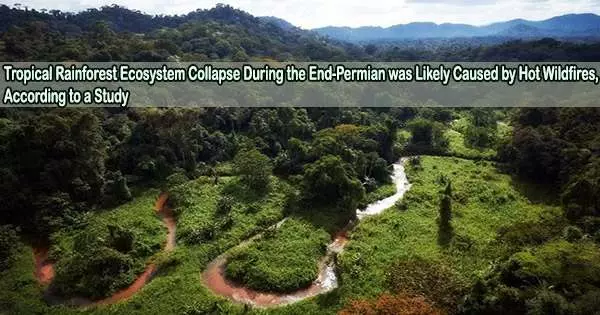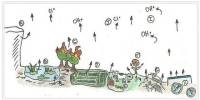Tropical rainforest ecosystems are incredibly diverse and complex systems found in the tropical regions near the equator. High temperatures and abundant rainfall throughout the year, creating a unique and lush environment, characterize them.
The most severe extinction event of the Phanerozoic, the end-Permian mass extinction (EPME), which happened ~252 million years ago, severely damaged both marine and terrestrial ecosystems by eradicating ~81% and ~89% of marine and terrestrial species, respectively.
Recently, a joint research group from the Nanjing Institute of Geology and Paleontology of the Chinese Academy of Sciences (NIGAPS), Nanjing University and Yunnan University has confirmed large-scale high-temperature wildfire combustion events through high-precision organic geochemical analysis of biomarker compounds polycyclic aromatic hydrocarbons (PAHs), which provides insights into the collapse of terrestrial ecosystems and the changeover of vegetation during the Permian-Triassic (P-T) transition period.
The results were published in Earth and Planetary Science Letters.
The Siberian Traps vast igneous province and wide-scale continental arc have seen intense volcanic activity, which has resulted in the massive emission of greenhouse and toxic gases, global warming, aridification, and frequent wildfires.
A well-known alternative to studying historical wildfire events is the presence of PAHs, which can serve as key indications for the incomplete combustion of organic materials generated at higher temperatures due to wildfires.
Most of the previous research on PAHs focused on marine records during the P-T transition period, and research on terrestrial records were relatively insufficient.
This study focused on the high-resolution PAHs in a non-marine P-T transitional sequence from the HK-1 drill core at the Lengqinggou section in Southwest China. When combined with negative organic carbon isotope anomalies, the PAHs content consistently showed significant enrichment during the P-T transitional period, indicating that large-scale high-temperature wildfire combustion events occurred during this time due to the arid and high-temperature conditions of the time.
Additionally, low-molecular-weight compounds such as Dibenzofuran (DBF) were mainly derived from the biodegradation of terrestrial plant polysaccharides and lignin.
The unusually high concentration of DBF compounds in the HK-1 drill core and the co-variation with the combustion-derived PAHs suggested that the PAHs were primarily produced by the high-temperature combustion of terrestrial plants, and the tropical rainforest vegetation systems provided enough fuel for extensive wildfires during the P-T transition.
The low PAH contents in the Lower Triassic indicated a fuel shortage after the mass deforestation. The significantly changed PAH ratios showed that the terrestrial ecosystem was greatly affected after the EPME.
These PAH records suggested that the vegetation type evolved from an isoetalean-dominated herbaceous heathland-like ecosystem to a thick and extremely diverse gigantopterid-dominated tropical rainforest ecosystem.
















